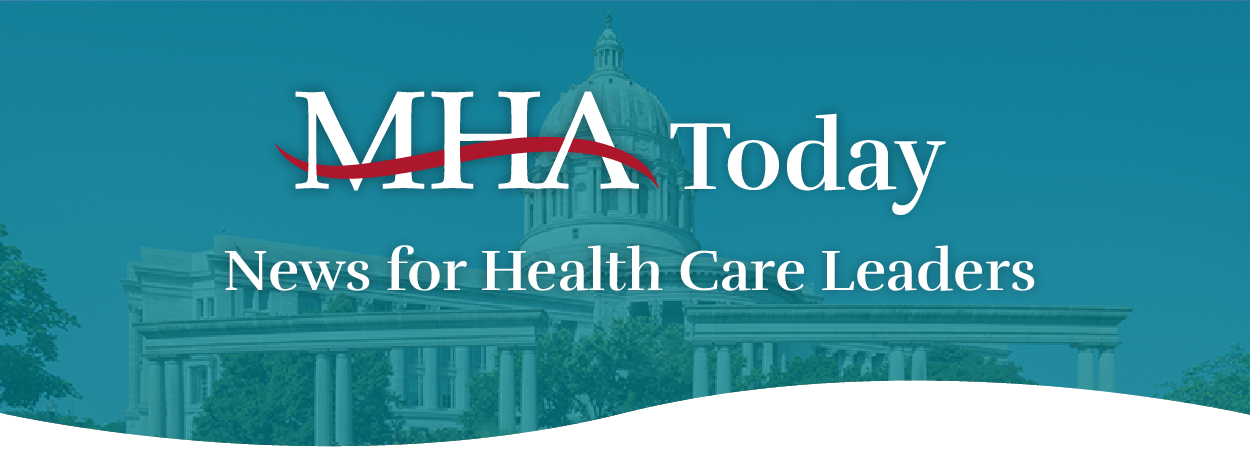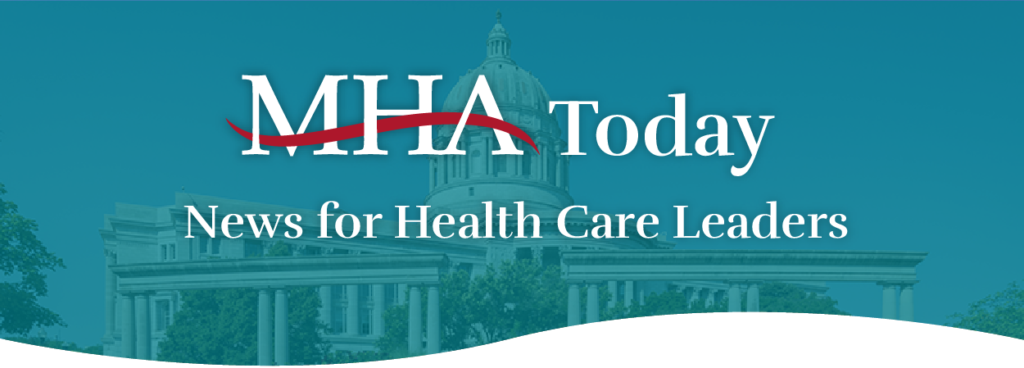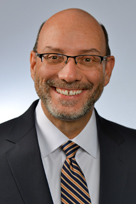Actions
Type

|
|
MHA Today is provided as a service to members of the Missouri Hospital Association. Additional information is available online at MHAnet. |
|
Insights |
|
It’s clear the MO HealthNet program is ripe for improvement. It’s also clear that there are aspects of the program that not only work well but should be replicated. For example, Missouri has had success with Patient-Centered Medical Homes that optimize primary care. Where possible, primary care should be the centerpiece of the Medicaid experience for the patient. That isn’t to say that access to more acute care settings isn’t necessary. However, when Medicaid enrollees use hospital emergency departments for care unnecessarily, they drive up costs in the program and wait times in the ED. As with the PCMH concept, Medicaid could benefit from a focus on enrollee health and continuity of care. One promising area is our partnership with the state to deliver Admission Discharge Transfer data in near-real time. The ADT system will improve care coordination between clinicians and reduce post-discharge challenges that can result in additional utilization. By partnering with the state, hospitals were able to help fund this program largely through the Federal Reimbursement Allowance and federal matching funds. The benefits will accrue to all stakeholders. But beyond the PCMH program, there are many additional worthy programs for the state to explore. These include Medicaid Accountable Care Organizations, new programs to engage on maternal health, expansion of school-based clinics and programs to engage on the social determinants of health. Despite all these good opportunities, there are real challenges as well, some of which are connected with the state’s decision to expand the Medicaid managed care system. There is a role for managed care in the state’s program. But the state needs to understand how to “manage” its part of that program. Part of the state’s Medicaid cost growth relates to managed care, which — regardless of the state’s fiscal situation — earns an actuarially sound increase annually. This federal requirement reduces the state’s ability to control costs. At the same time, there is little transparency on the “value” delivered to enrollees. Hospitals have experienced a “thumbs on the scale” tactic when it comes to fair and open negotiation. The state’s initial reaction was to weigh in on the side of the insurers — that out of network providers would receive 90% of fee-for-service reimbursement. It isn’t the state’s role to pick winners and losers in contracting between hospitals and providers. Hospitals and other providers already are burdened by the managed care bureaucracy — dealing with extensive utilization review for necessary services, while pulling caregivers and their staff away from patient care and toward paperwork to justify care. Hospitals also have had to wait months for health plans to credential newly hired physicians. This especially is troubling for rural hospitals who struggle to recruit much-needed physicians to their communities. The evolving out-of-state payment repeal and outpatient fee schedule rule are ominous signs for hospitals. MO HealthNet Director Todd Richardson has articulated he wants to move Missouri toward a “best in class” Medicaid program. Evidence suggests that neither of these changes will accomplish improvement. They will constitute cuts in payments to hospitals. There are numerous options that could improve the program, help control costs and deliver additional value. These will require hard work and consensus building. Hospitals have a long track record of helping the state innovate to fund and improve the program. Many have invested in their communities for decades — some more than a century — and have a strong desire to see the program, their communities and the state be successful in delivering high-quality, efficient care. That’s why the time is right to have a robust conversation about the strategies that can be put in place to deliver that “best in class” program. Hospitals understand that having aligned incentives makes all the difference. What will be telling in the weeks and months ahead will be whether there is an effort to align goals for patients, providers and payers. It’s too early to know. However, if the strategy to deliver “best in class” performance doesn’t hold all parties equally accountable, require equivalent transparency, and reflect a common goal of value for the patient and the stakeholders that administer the program, we won’t achieve transformation or even reform. The choices ahead matter. We’re proactively working to ensure the state has the best data to make good decisions about the future of the program. Let me know what you think. Herb B. Kuhn |
|
Advocate |
Committee Reviews Tax Credit For Medical PreceptorsStaff Contact: Bill Anderson or Jill Williams A state House committee held a hearing on House Bill 2036, which authorizes as much as $200,000 in state tax credits to those serving as medical preceptors for medical students and are not otherwise directly compensated for doing so. Up to 200 preceptorships will be funded annually. The tax credit would be financed by a small increase in the fee for medical licenses. MHA expressed support for the measure.
|
|
Regulatory News |
MLN Connects Provider eNews AvailableStaff Contact: Andrew Wheeler Updates to MLN Connects Provider eNews were issued by the Centers for Medicare & Medicaid Services. eNews includes information about national provider calls, meetings, events, announcements and other MLN educational product updates. The latest issue provides updates and summaries of the following.
|
|
Quality and Population Health |
COVID-19 Response Update AvailableStaff Contact: Jackie Gatz or Keri Barclay As the coronavirus disease 2019 spread continues globally, the following items summarize essential information for your awareness.
MHA incident command remains activated to monitor the ongoing impacts to Missouri hospitals and health care providers. To proactively gauge the supply chain impact on day-to-day care delivery, MHA maintains a statewide supply chain query in EMResource, which launched Feb. 3. Hospital staff are encouraged to implement supply optimization strategies to conserve personal protective equipment and keep the EMResource query up-to-date as the situation unfolds. Visit MHA’s website for the most current information. CHR&R Announces County Health Rankings WebinarStaff Contact: Stephen Njenga County Health Rankings & Roadmaps is offering a webinar, “Making the Most of the 2020 County Health Rankings Release,” which will include information on new features, how to use the rankings, and tips for using highlighted tools and resources. The webinar is scheduled for 2 p.m. Tuesday, March 3. Registration is required. CMS Announces IQR Education SessionStaff Contact: Sherry Buschjost A webinar for hospitals participating in the Hospital Inpatient Quality Reporting Program is scheduled at 2 p.m. Tuesday, March 10. Registration is required for the presentation, which will answer SEP-1 abstraction questions and provide rationale for the guidance in version 5.7 of the specifications manual.
|
|
Workforce News |
MU School Of Medicine, Missouri Board Of Healing Arts To Collect Physician Workforce DataStaff Contact: Jill Williams or Mary Becker The University of Missouri School of Medicine and the Missouri State Board of Registration for the Healing Arts are collaborating to collect workforce data to better understand the physician workforce in Missouri. The survey results will be used in conjunction with other health care workforce data to inform local and state policymakers, public and private health care providers, and health care workforce training programs to better meet Missourians’ health care needs and to ensure the best possible outcomes for Missouri’s population health. This survey is part of a decade-long collaborative project of the Missouri Healthcare Workforce Advisory Group to plan, develop and implement a system to collect data to understand our state’s distribution of health care professionals and meet the needs of local communities. If you have any issues with the survey, please contact Jill Lucht, survey administrator, at luchtj@health.missouri.edu.
|
|
Did You Miss An Issue Of MHA Today? |
|
February 24, 2020 February 26, 2020
|
Consider This …Around one in six U.S. youth ages 6 to 17 has a mental, behavioral or developmental disorder such as anxiety, depression or attention-deficit/hyperactive disorder. Less than 20% of these youth receive the care they need. |










 Since January, I’ve delivered a series of columns on the state of Medicaid and the options for a program that would serve all stakeholders — patients, providers and payers. In this final installment, I want to discuss some of the opportunities and barriers to a better program.
Since January, I’ve delivered a series of columns on the state of Medicaid and the options for a program that would serve all stakeholders — patients, providers and payers. In this final installment, I want to discuss some of the opportunities and barriers to a better program.